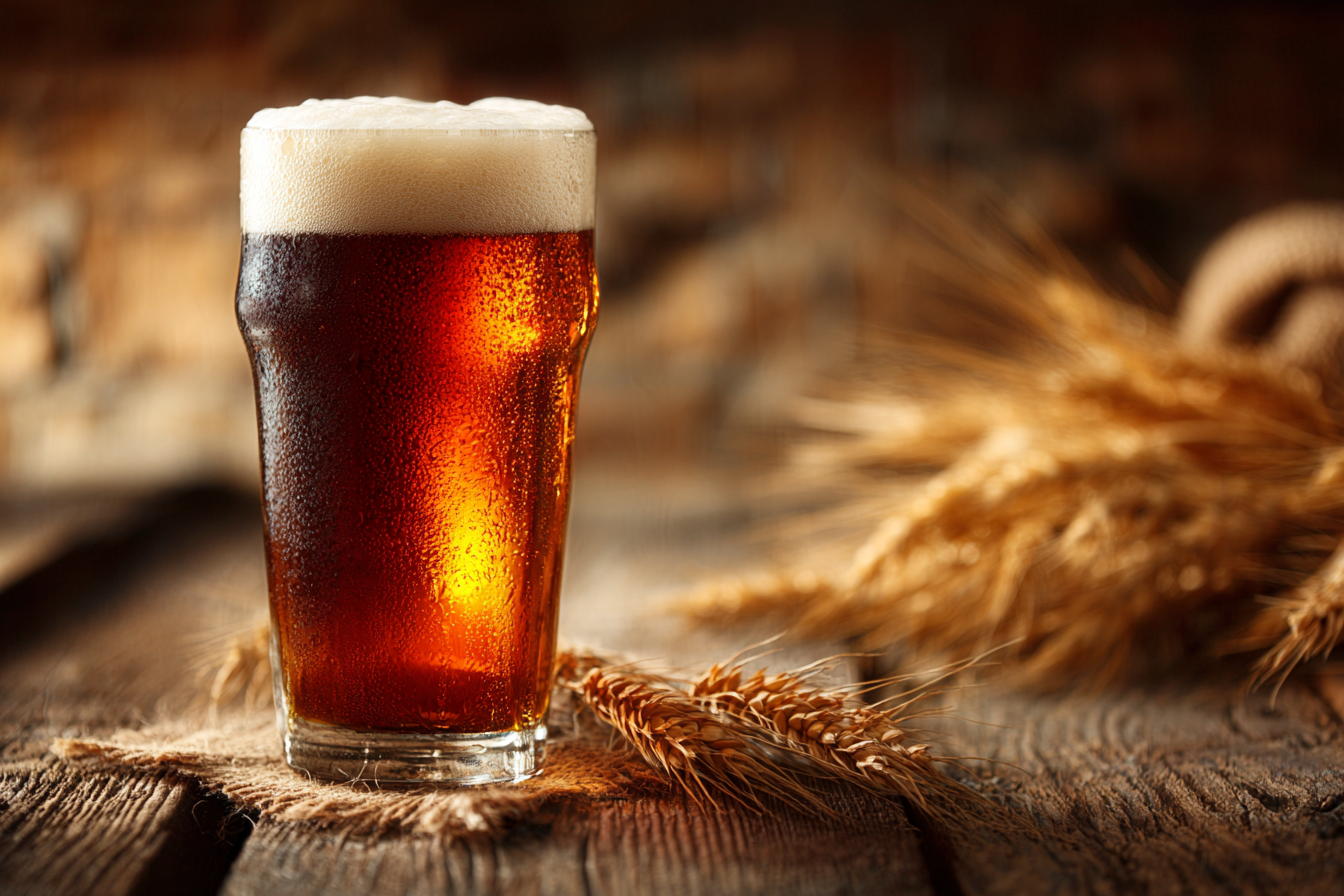Wheatwine beer is a captivating and robust style that intrigues beer enthusiasts with its unique blend of characteristics. Combining the rich, warming qualities of barleywine with the lighter, smoother influence of wheat malt, wheatwine offers a distinctive experience that stands apart from other strong ales. If you’ve ever wondered what makes wheatwine so special, you’re in the right place. Let’s explore the defining wheatwine beer characteristics, from its origins and ingredients to its flavor, aroma, and ideal drinking occasions.
Introduction to Wheatwine Beer
Wheatwine is a relatively niche substyle within the world of strong ales, known for its high alcohol content, malt-forward body, and the smooth, fresh qualities that wheat malt imparts. Unlike traditional barleywine, which leans heavily on barley malts and typically boasts a deep amber to mahogany hue, wheatwine introduces a brighter, creamier element thanks to the wheat component. The result is a beer that marries intensity with approachability, making it both a sipping beer and a fascinating conversation starter for those who appreciate complex brews.
Origins and History of Wheatwine
The concept of wheatwine is a more modern innovation within the craft beer movement, rather than an ancient or classic style. The style’s origins come from brewers experimenting with barleywine recipes by replacing a significant portion of the barley malt with wheat. This adaptation was initially aimed at softening the strong malt character and introducing a different mouthfeel and flavor profile.
While barleywine dates back to the 18th century in England and later in the United States, wheatwine emerged as craft brewers began pushing stylistic boundaries in the late 20th and early 21st centuries. Many credit pioneering craft breweries for popularizing wheatwine and showcasing how wheat malt can significantly transform a traditionally barley-centric style.
Key Ingredients and Brewing Techniques
The foundation of wheatwine lies in its carefully chosen ingredients and brewing methods. Key ingredients typically include:
- Wheat Malt: The defining ingredient, wheat malt generally makes up 30-50% of the grain bill. It brings protein and residual sweetness that creates a fuller, creamier mouthfeel.
- Barley Malt: Mostly pale or caramel malts provide the backbone of the malt sweetness and color, balancing the wheat’s softer character.
- Hops: Usually moderate in bitterness, hops often come in the form of English or American varieties that complement the malt without overwhelming sweetness.
- Yeast: Ale yeast strains that allow the malt flavors to shine through while producing moderate fruity esters.
In terms of brewing techniques, wheatwine often involves extended mash times to fully convert wheat’s complex starches and ensure smoothness. The high original gravity requires careful yeast management to achieve full fermentation and balanced alcohol warmth. Many brewers also employ aging or conditioning techniques to mellow the alcohol and deepen the flavor complexity.
Flavor Profile: Malt Sweetness, Wheat Influence, and Alcohol Warmth
When it comes to tasting wheatwine, the first thing you notice is its rich malt sweetness. This is reminiscent of caramel, toffee, and sometimes dark fruit flavors, which provide a solid backbone. However, unlike traditional barleywines that may feel dense or oily, wheatwine brings in a distinctly softer and creamier texture from the wheat malt. This wheat influence reduces graininess and adds a subtle bready, dough-like character.
Moreover, the alcohol presence—typically ranging from 8% to 12% ABV—is quite noticeable but well integrated. Rather than harsh or burning, the warmth from the alcohol feels smooth and warming, enhancing the overall complexity without detracting from drinkability.
Appearance: Color, Clarity, and Head Formation
Wheatwine generally presents a deep gold to amber color, sometimes with reddish highlights depending on the malt bill. While barleywine can lean more towards dark amber or brown, wheatwine retains a slightly brighter hue, offering visual clues to the wheat’s contribution.
The beer often has moderate clarity, though this can vary depending on the brewery’s filtration methods. Due to higher protein content from the wheat malt, wheatwine often exhibits a creamy, dense head with good retention, which enhances the sensory experience with texture and scent capture.
Aroma and Taste Notes
The aroma of wheatwine is an inviting mix of sweet malt, light fruit esters, and subtle hop nuances. You might detect scents reminiscent of ripe stone fruits, honey, or even a hint of citrus peel depending on the hop variety and yeast strain.
On the palate, wheatwine delivers:
- Malt-forward sweetness: Caramel, toffee, honey, and biscuit notes.
- Wheat character: Soft, bready, sometimes slightly nutty undertones.
- Fruity esters: Light hints of pear, apricot, or apple from yeast activity.
- Alcohol warmth: Gentle heat that rounds out the flavor without overpowering.
- Bitterness: Balanced, usually mild to medium, complementing sweetness.
These elements combine to create a layered experience that is simultaneously rich, smooth, and complex.
Comparison to Related Beer Styles
To fully appreciate wheatwine, it helps to compare it to related styles:
- Barleywine: Wheatwine is similar in strength but differs with its smoother mouthfeel and lighter wheat character. Barleywines tend to be richer and sometimes more aggressive in malt and alcohol profile.
- Wheat Beer: While traditional wheat beers like Hefeweizens focus on light, refreshing qualities and lower alcohol, wheatwine is intense and more contemplative, though both share wheat malt as a base ingredient.
- Strong Ale: Wheatwine fits within the strong ale category but carves a niche with its unique malt balance and wheat addition.
Ideal Occasions for Drinking Wheatwine
Because of its high alcohol content and complex flavor, wheatwine is best enjoyed thoughtfully rather than casually. Here are some ideal occasions:
- Slow sipping: Perfect for relaxed evenings, allowing time to savor the layers.
- Special celebrations: Its robust character makes it fitting for toast-worthy moments.
- Pairing with food: Excellent with rich dishes like roasted meats, strong cheeses, or desserts such as caramelized nuts or fruit tarts.
- Beer tasting sessions: Its unique profile offers a fascinating point of comparison when exploring complex ales.
Serving wheatwine slightly below room temperature (around 50-55°F or 10-13°C) enhances its flavors and aroma, while glassware like a tulip or snifter helps concentrate the bouquet and warmth.
Gaining a Deeper Appreciation for Wheatwine
Wheatwine is truly a beer style that invites discovery and appreciation. By blending the malt intensity of barleywine with the creamy softness of wheat malt, it creates a brew that’s rich yet approachable, warming yet nuanced. Whether you’re a dedicated barleywine fan looking for a variation or a craft beer enthusiast eager to explore new styles, wheatwine provides a rewarding experience.
Next time you encounter a wheatwine on tap or in a bottle shop, consider its origins, ingredients, and the craftsmanship behind its brewing. Savor its flavor complexity and allow yourself to enjoy the balance of sweetness, wheat smoothness, and alcohol warmth. You’ll find that wheatwine is not just another strong ale—it’s a unique and memorable expression of creativity in the world of beer.







